Have you ever dreamt of walking the same grounds as ancient emperors, meditating in sacred temples, or witnessing nature’s raw beauty? If so, then you should visit these UNESCO world heritage sites in India, a land brimming with cultural and natural wonders, is your ultimate destination. In Part 1, we learnt about some of India’s most treasured UNESCO World Heritage Sites.
Now, we dive deeper, understanding the magnificence of twenty-one more landmarks that stand as testaments to India’s rich tapestry of history, art, and ecology. Prepare to be mesmerized by architectural marvels, serene spiritual abodes, and breathtaking landscapes.
Table of Contents
| Read Also-> 21 UNESCO World Heritage Sites in India- Part 1 |
22 UNESCO World Heritage Sites in India
1. Mountain Railways of India

Nilgiri Mountain Railway
Heard the iconic blockbuster song- Chaiyya Chaiyya from “Dil se”? Yes, the iconic song was shot on Nilgiri Mountain Express and it is still in operation.
The Mountain Railways of India are a collective UNESCO World Heritage Sites in India encompassing three incredible engineering feats: the Darjeeling Himalayan Railway, the Nilgiri Mountain Railway, and the Kalka-Shimla Railway. Each railway snakes through breathtaking mountainous terrains, showcasing not only the beauty of the Himalayas and Nilgiri Hills but also remarkable feats of human ingenuity.
Darjeeling Himalayan Railway (DHR): Nicknamed the “Toy Train,” this railway winds its way through the foothills of the Himalayas in West Bengal.
Nilgiri Mountain Railway (NMR): This railway, nestled in the Nilgiri Hills of Tamil Nadu, boasts the unique distinction of being India’s only rack railway.
Kalka-Shimla Railway: Located in the foothills of the Himalayas in Himachal Pradesh, this railway connects the historic town of Shimla with Kalka.
Mahabodhi Temple Complex at Bodh Gaya
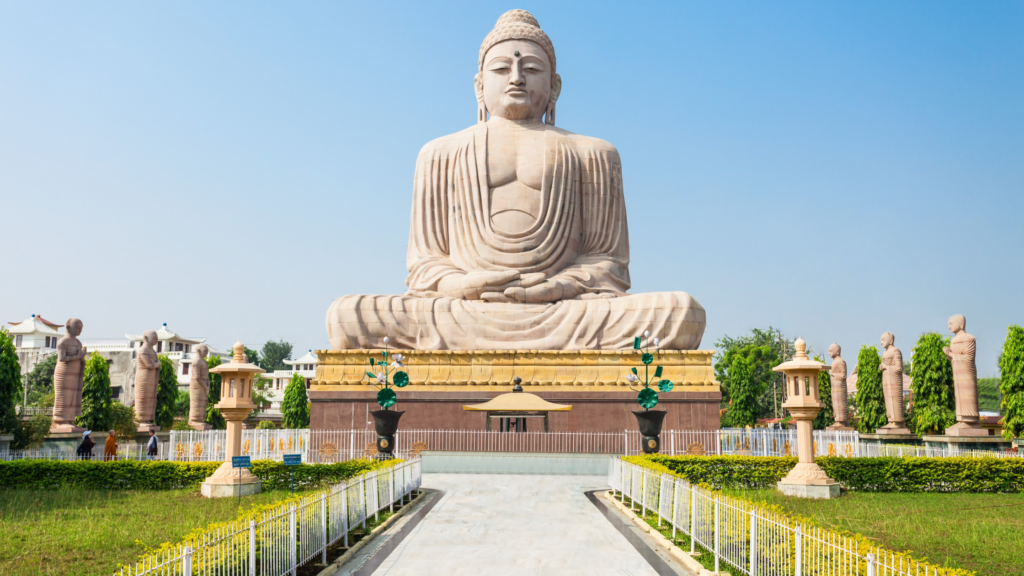
The Mahabodhi Temple Complex at Bodh Gaya is one of the holiest pilgrimage and UNESCO World Heritage Sites in India for Buddhists around the world. It’s considered to be the place where Siddhartha Gautama, the founder of Buddhism, attained enlightenment under a Bodhi tree (a specific fig tree) after years of meditation and spiritual searching. The name Mahabodhi itself translates to “Great Awakening Temple.”
The complex encompasses a 4.86-hectare area and includes the Mahabodhi Temple, the Bodhi Tree, various monasteries, stupas, and archaeological remains. The present temple structure dates from the 5th-6th centuries CE, making it one of the earliest surviving Buddhist temples built entirely in brick.
Rock Shelters of Bhimbetka

The Rock Shelters of Bhimbetka are an archaeological treasure trove nestled in the foothills of the Vindhya Mountains in Madhya Pradesh, India. Designated as a UNESCO World Heritage Site in 2003, this sprawling complex boasts over 750 rock shelters scattered across seven hills, offering a glimpse into the lives of some of the earliest inhabitants of India.
The significance of Bhimbetka lies in the remarkable collection of prehistoric rock paintings adorning the walls of these natural shelters. These paintings, estimated to date back from the Paleolithic period (around 100,000 years ago) to the historic period, provide an invaluable window into the cultural practices, rituals, and daily lives of the people who inhabited this region for millennia.
Champaner-Pavagadh Archaeological Park
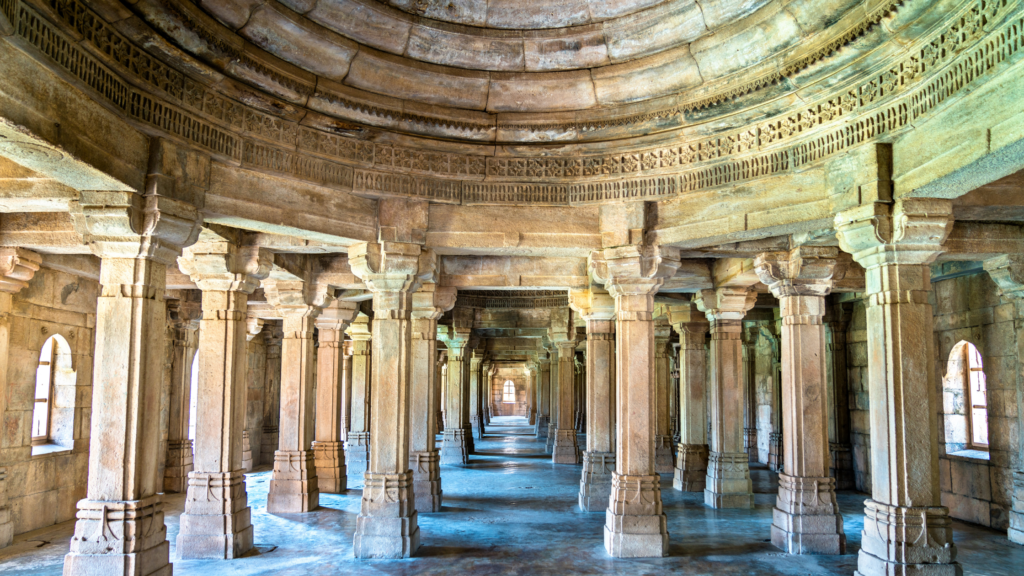
The Champaner-Pavagadh Archaeological Park, is one of the best UNESCO World Heritage Sites in India since 2004, unfolds like a storybook in Gujarat, India. Nestled amidst dramatic landscapes, this sprawling complex offers a captivating blend of archaeological wonders, historical remnants, and vibrant cultural heritage.
The park encompasses a vast area, encompassing the historical city of Champaner and the majestic Pavagadh Hill. Champaner, founded in the 8th century, flourished as a Hindu capital under the Chavda Dynasty. Later, in the 15th century, the Mughal emperors established their capital here, creating a unique fusion of architectural styles.
Chhatrapati Shivaji Terminus (formerly Victoria Terminus)
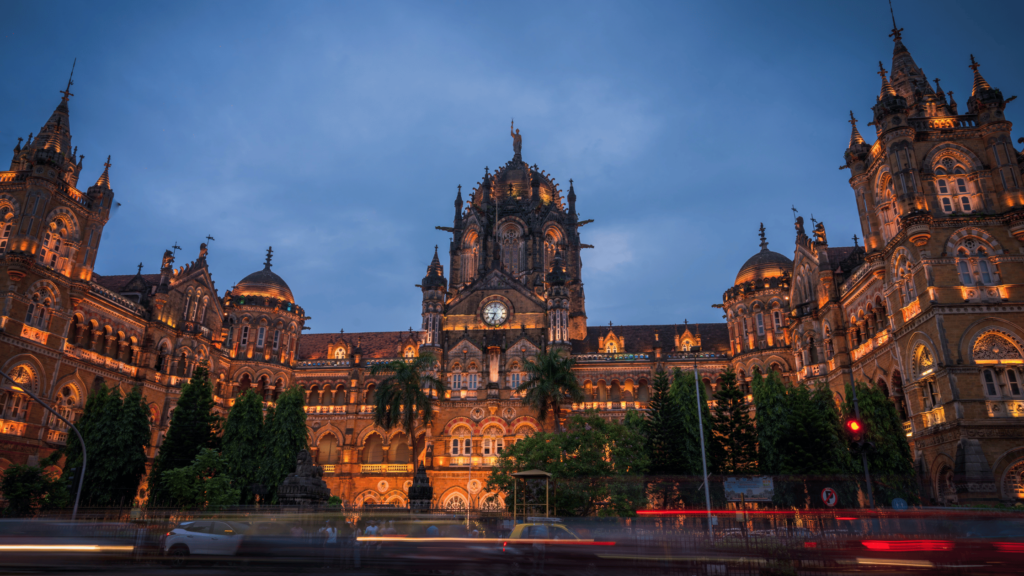
The Chhatrapati Shivaji Terminus, formerly known as Victoria Terminus, is a majestic monument and one of the top UNESCO World Heritage Sites India. It was inscribed on the list in 2004 for its outstanding universal value.
This terminus is a remarkable fusion of Victorian Gothic Revival architecture, a European style, and traditional Indian elements, creating a visually stunning and culturally significant landmark. The building incorporates pointed arches, stained glass windows, and towering ceilings reminiscent of Gothic architecture, harmoniously combined with Indian domes, motifs, and intricate stonework.
Red Fort Complex
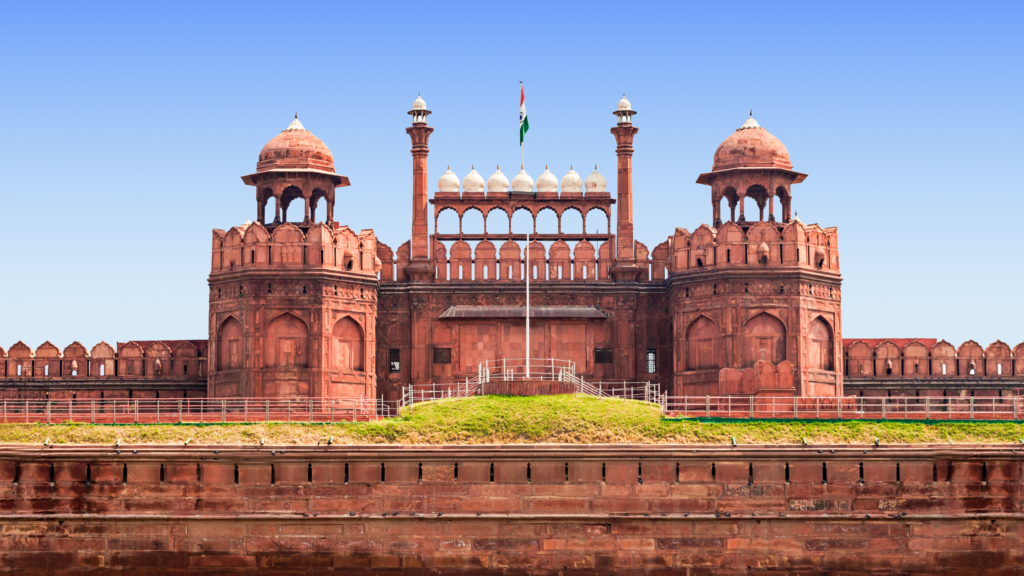
The Red Fort Complex in Delhi, India, stands as a majestic symbol of Mughal power and artistry, and rightfully so, it is a UNESCO World Heritage Site inscribed in 2007.
UNESCO specifically recognizes the Red Fort Complex as representing the “zenith of Mughal creativity.” The fort’s architecture showcases a fascinating blend of Persian, Timurid, and Hindu influences, reflecting the artistic culmination of the Mughal era. This fusion of styles is evident in the use of red sandstone, intricate carvings, bulbous domes, and flowing water channels.
The Jantar Mantar, Jaipur
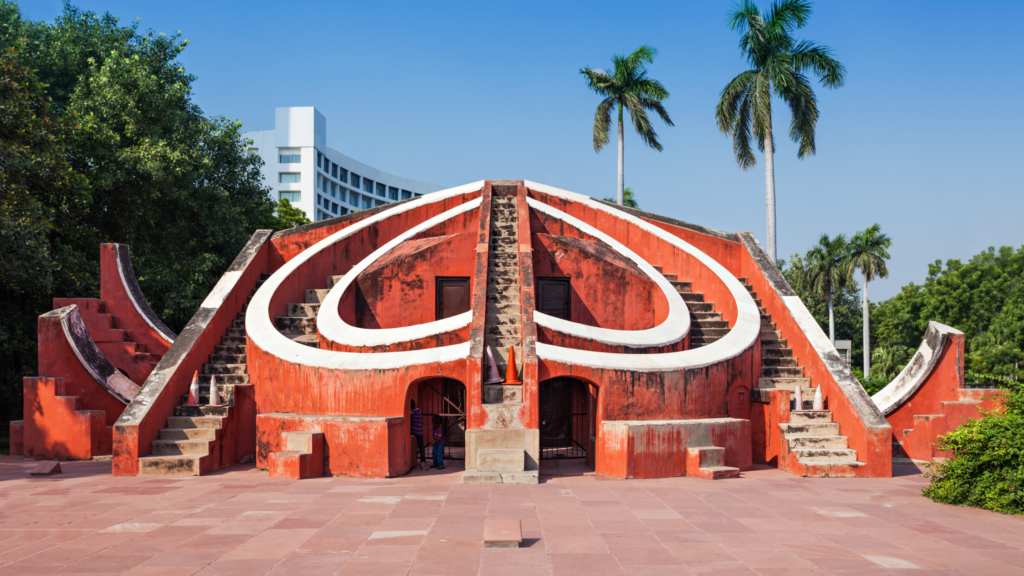
The Jantar Mantar in Jaipur, India, is a captivating astronomical observatory unlike any other. Built in the early 18th century by Maharaja Sawai Jai Singh II, a scholarly and astronomy-enthusiastic king, it’s not just a UNESCO World Heritage Site, but a unique open-air museum of astronomy.
Forget telescopes and domes! Jantar Mantar features a collection of around 19 monumental astronomical instruments, all built using stone, marble, and brass. These colossal structures, some reaching several stories high, are designed to measure the movement of celestial bodies, track time, and predict astronomical phenomena.
Western Ghats

The Western Ghats, a majestic mountain range running parallel to the western coast of India, isn’t just a scenic wonder, it’s a UNESCO World Heritage Site inscribed in 2012.
The Western Ghats are recognized as one of the world’s eight “hottest hotspots” of biological diversity. This mountain range is a treasure trove of flora and fauna, with a high degree of endemism, meaning a significant number of species found nowhere else on Earth. From unique amphibians and reptiles to exotic plants and critically endangered mammals, the Western Ghats boast an unparalleled variety of life.
These mountains are geologically older than the Himalayas, and their presence significantly impacts the Indian climate.
Hill Forts of Rajasthan
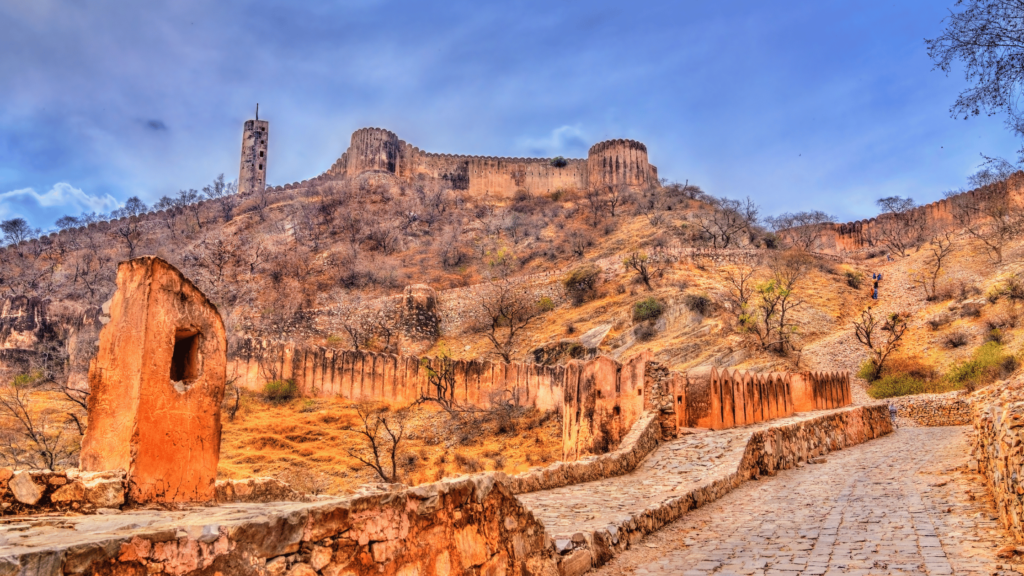
The Hill Forts of Rajasthan, a group of six majestic forts scattered across the state of Rajasthan in northern India, stand as a UNESCO World Heritage Site inscribed in 2013.
These six forts – Chittorgarh Fort, Kumbhalgarh Fort, Ranthambore Fort, Gagron Fort, Amer Fort, and Jaisalmer Fort – were built and enhanced between the 5th and 18th centuries CE by various Rajput kings. Each fort served as a center of power, a symbol of Rajput resistance against invading armies, and a repository of artistic expression.
Great Himalayan National Park Conservation Area
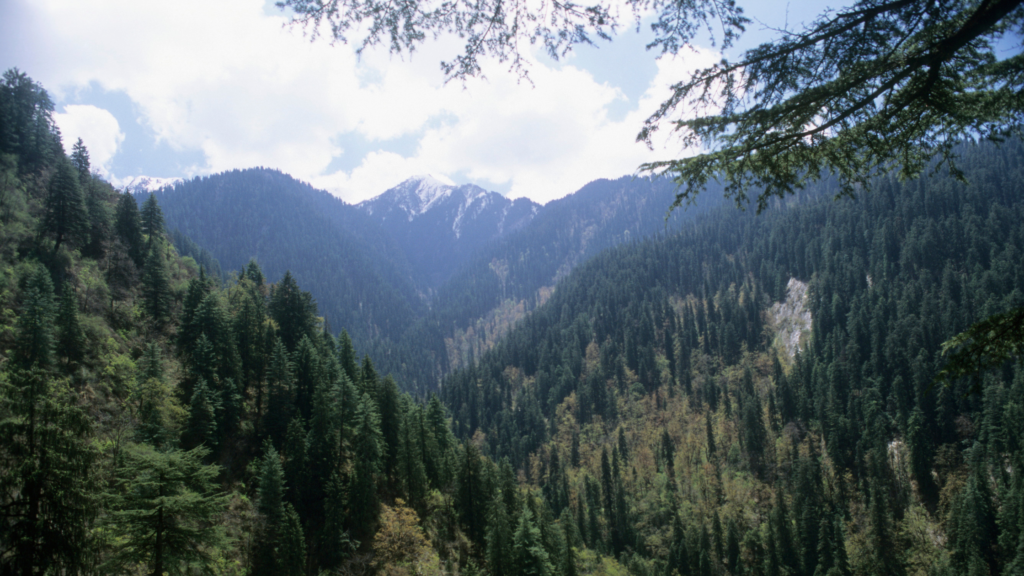
The Great Himalayan National Park Conservation Area (GHNPCA) is a sprawling protected area nestled in the far western Himalayas of Himachal Pradesh, India. Designated as a UNESCO World Heritage Site in 2014, this park encompasses a diverse landscape of high alpine peaks, lush valleys, glaciers, and rivers, making it a haven for biodiversity and a dream destination for nature enthusiasts.
The GHNPCA is a treasure trove of flora and fauna, with over 1,000 plant species, including many medicinal herbs, and more than 375 faunal species.
Rani-ki-Vav (the Queen’s Stepwell) at Patan, Gujarat

The Rani-ki-Vav (the Queen’s Stepwell) at Patan, Gujarat, is a mesmerizing stepwell unlike any other. Designated as a UNESCO World Heritage Site in 2014, it’s not just a source of water but an exquisite example of architectural brilliance, artistic expression, and cultural significance.
Unlike most stepwells built for utilitarian purposes, the Rani-ki-Vav is designed as an inverted temple. Descending seven storeys of intricately carved steps feels like entering a sacred space dedicated to water. This unique design reflects the reverence Hindus hold for water as a life-sustaining element.
Archaeological Site of Nalanda Mahavihara at Nalanda, Bihar
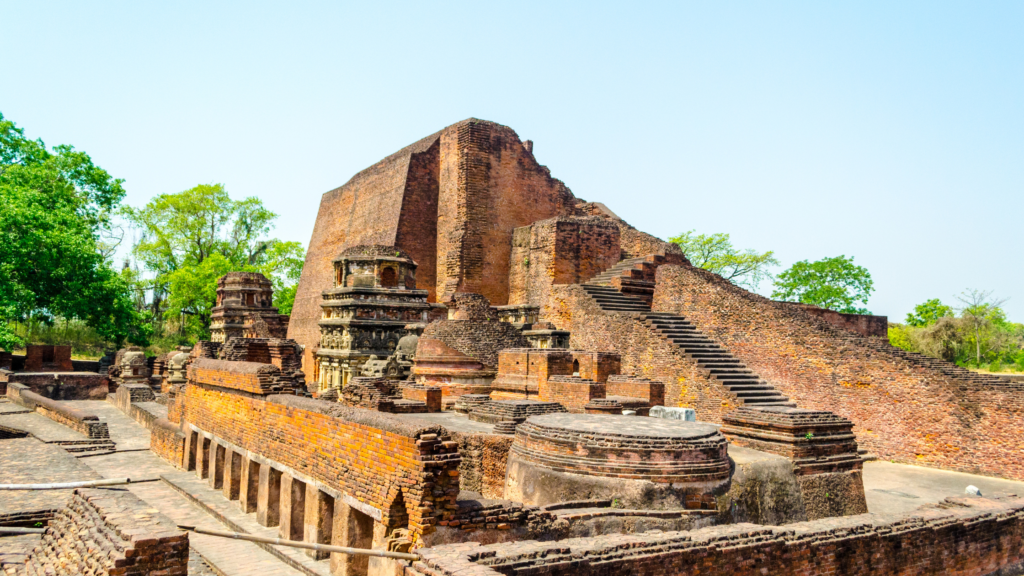
Nestled amidst the lush plains of Bihar, India, lies the Archaeological Site of Nalanda Mahavihara, a UNESCO World Heritage Site inscribed in 2006. This isn’t just a collection of ruins; it’s a captivating journey into the heart of India’s glorious intellectual past. For centuries, Nalanda Mahavihara flourished as a world-renowned Buddhist monastic and scholastic institution, attracting scholars and students from across Asia.
From the 5th century CE to the 13th century CE, Nalanda Mahavihara thrived as a premier center for Buddhist learning. It encompassed a vast complex of monasteries, viharas (residential and educational buildings), stupas (hemispherical structures containing relics), and temples, all dedicated to the pursuit of knowledge.
Khangchendzonga National Park
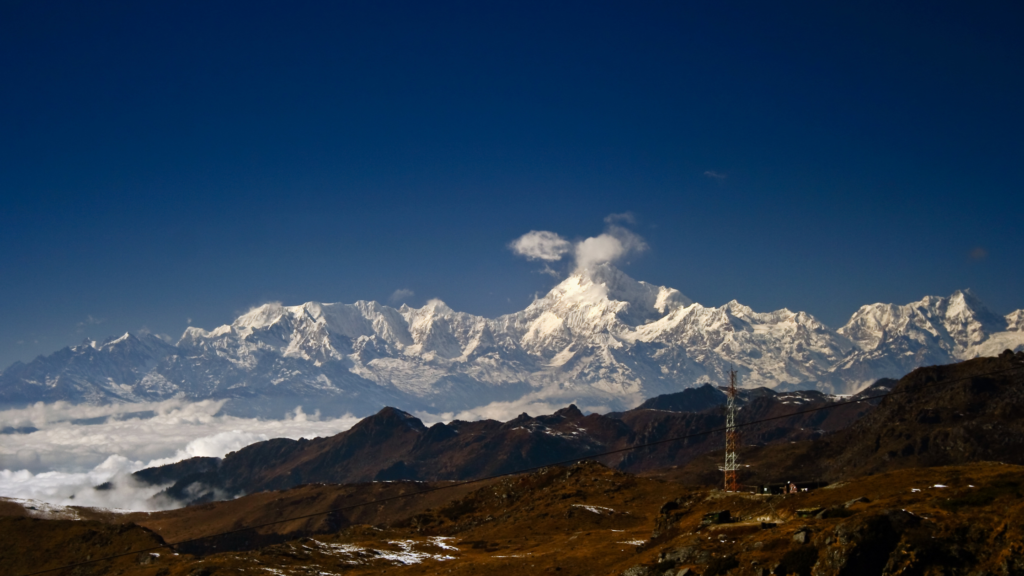
Khangchendzonga National Park, nestled in the majestic Himalayas of Sikkim, India, is a UNESCO World Heritage Site inscribed in 2016. This isn’t just a protected area; it’s a tapestry woven with breathtaking landscapes, exceptional biodiversity, and rich cultural heritage.
The park takes its name from the mighty Mount Khangchendzonga, the world’s third-highest peak, towering over the landscape at a staggering 8,586 meters (28,169 ft). This snow-capped peak, revered by the local people, is the centerpiece of the park’s dramatic scenery.
The park holds immense spiritual significance for the local people. Mount Khangchendzonga is considered sacred, and several monasteries and pilgrimage sites lie within the park boundaries. Exploring these sites offers a glimpse into the religious beliefs and traditions of the region.
The Architectural Work of Le Corbusier, an Outstanding Contribution to the Modern Movement

UNESCO World Heritage Sites in India
The Architectural Work of Le Corbusier, inscribed on the UNESCO World Heritage List in 2016, is a remarkable collection of 17 buildings scattered across seven different countries.
Le Corbusier was a visionary architect who challenged traditional architectural styles and championed a new approach – the International Style. This style emphasized clean lines, functionality, open floor plans, and the use of modern materials like concrete, steel, and glass. The buildings included in the UNESCO site showcase these principles in a variety of ways.
Historic City of Ahmadabad
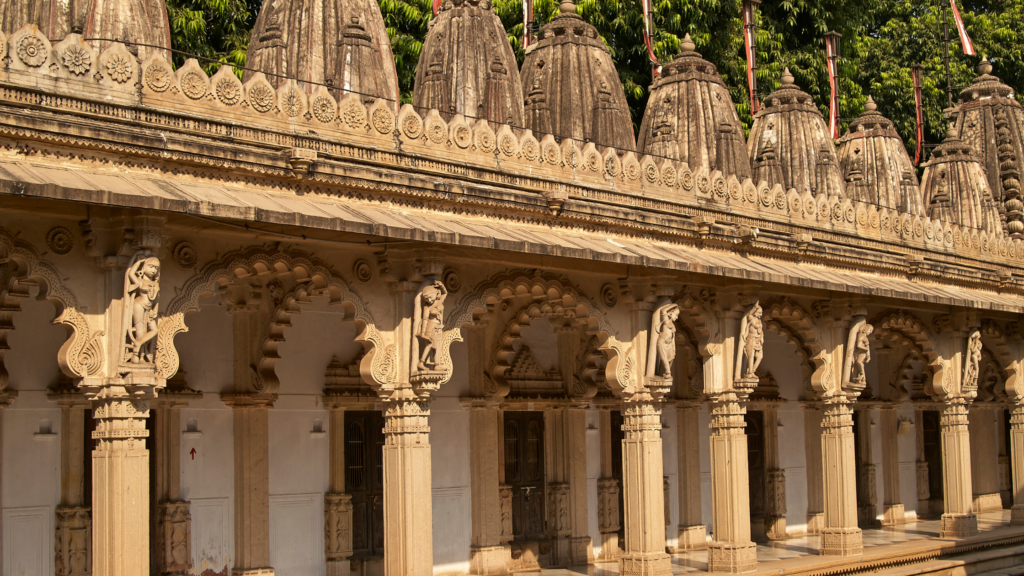
Built on the eastern banks of the Sabarmati River, it wasn’t just any city; it was a flourishing cultural and commercial center for centuries. Today, Ahmedabad holds its head high as a well-deserved UNESCO World Heritage Site, inscribed in 2017.
Ahmedabad boasts a unique blend of architectural influences, reflecting its rich history. From the imposing Bhadra Fort, a reminder of the Sultanate period, to the intricately carved Jain temples, the city showcases a remarkable fusion of Hindu, Islamic, and Jain architectural styles.
The city’s rich heritage of arts and crafts continues to thrive. From the intricate embroidery work and textile production to the famed lacquerware industry, Ahmedabad pulsates with a vibrant living tradition of craftsmanship.
Victorian Gothic and Art Deco Ensembles of Mumbai
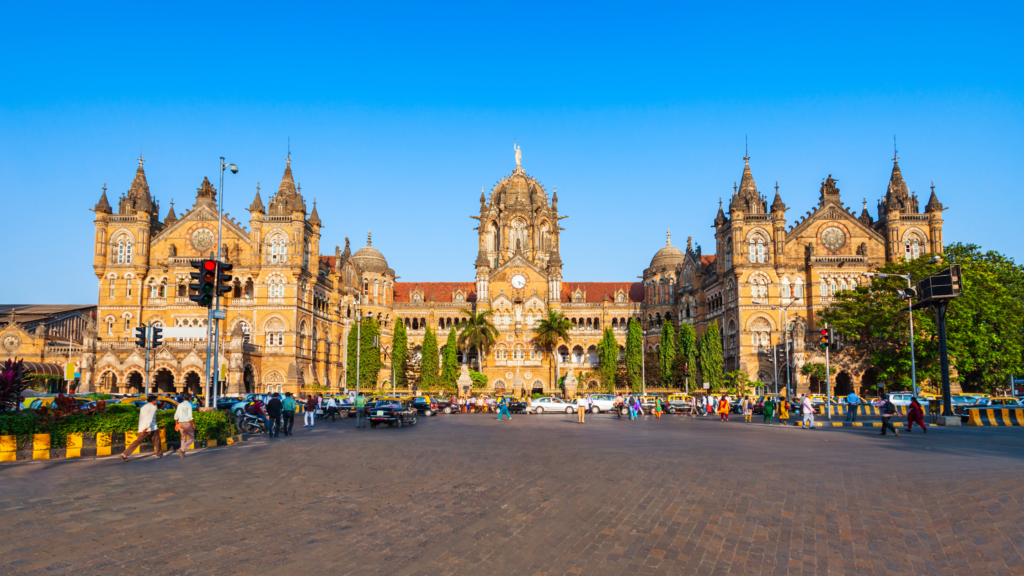
The Victorian Gothic and Art Deco Ensembles of Mumbai, a UNESCO World Heritage Site inscribed in 2018, offer a fascinating glimpse into the city’s colonial past and its evolution into a modern metropolis.
The ensemble comprises two distinct architectural styles: Victorian Gothic and Art Deco. The eastern side of the Oval Maidan, a large open space, features the grand Victorian Gothic public buildings built in the 19th century. These structures, like the High Court and the University of Mumbai, showcase the architectural language of the British Empire, often incorporating Indian elements like balconies and verandas to suit the climate.
The ensemble narrates the story of Mumbai’s development from a colonial trading post to a major international city. The Victorian Gothic buildings represent the city’s growth under British rule, while the Art Deco structures symbolize its emergence as a modern metropolis in the 20th century.
Jaipur City, Rajasthan
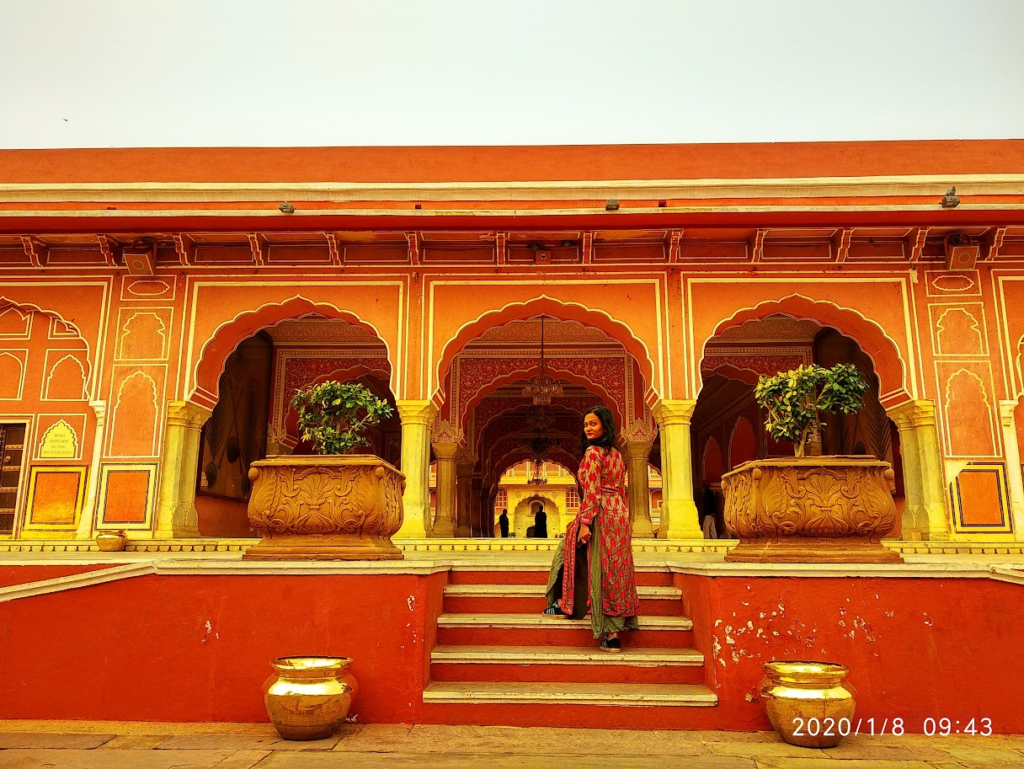
Jaipur, also known as the “Pink City,” isn’t just a vibrant tourist destination in Rajasthan, India; it’s a UNESCO World Heritage Site inscribed in 2017. This recognition highlights the city’s exceptional urban planning, architectural marvels, and rich cultural heritage.
Unlike many historical Indian cities, Jaipur wasn’t built organically; it was meticulously planned in the 18th century by Sawai Jai Singh II. The city’s layout, based on Hindu geometric principles, features a grid pattern of wide avenues, intersecting streets, and clearly defined zones for palaces, residences, and marketplaces. This well-thought-out design reflects the forward-thinking vision of its founder.
Dholavira: a Harappan City

UNESCO World Heritage Sites in India
Dholavira: a Harappan City, is a fascinating archaeological site located on the Khadir Bet island in the Great Rann of Kachchh, Gujarat, India. It’s not just an excavation site; it’s a UNESCO World Heritage Site inscribed in 2021, recognized for its exceptional significance as one of the largest and well-preserved urban settlements of the Indus Valley Civilization (IVC).
One of the most intriguing discoveries at Dholavira is a three-sided pillar with ten Indus Valley script symbols etched onto it. Nicknamed the “Signboard,” it’s considered one of the most comprehensive inscriptions found at any Harappan site, potentially offering clues about the writing system and communication practices of this ancient civilization.
The site showcases their ingenuity in water management systems, including reservoirs for storing rainwater and intricate drainage systems for channelling wastewater. Additionally, the strategic positioning of the city on an island and the use of fortifications demonstrate advanced urban planning concepts.
Kakatiya Rudreshwara (Ramappa) Temple, Telangana
The Kakatiya Rudreshwara (Ramappa) Temple, also known simply as the Ramappa Temple, is a captivating blend of artistic and engineering marvel located in Palampet village, Mulugu district, Telangana, India. Designated as a UNESCO World Heritage Site in 2021, it stands as a testament to the architectural brilliance and rich cultural legacy of the Kakatiya dynasty (1123–1323 CE).
Built in the 13th century CE by Recharla Rudra, a general of the Kakatiya king Ganapati Deva, the temple embodies the architectural style of the Kakatiya dynasty. This style is known for its intricate carvings, symmetrical layouts, and use of star-shaped platforms.
Sacred Ensembles of the Hoysalas
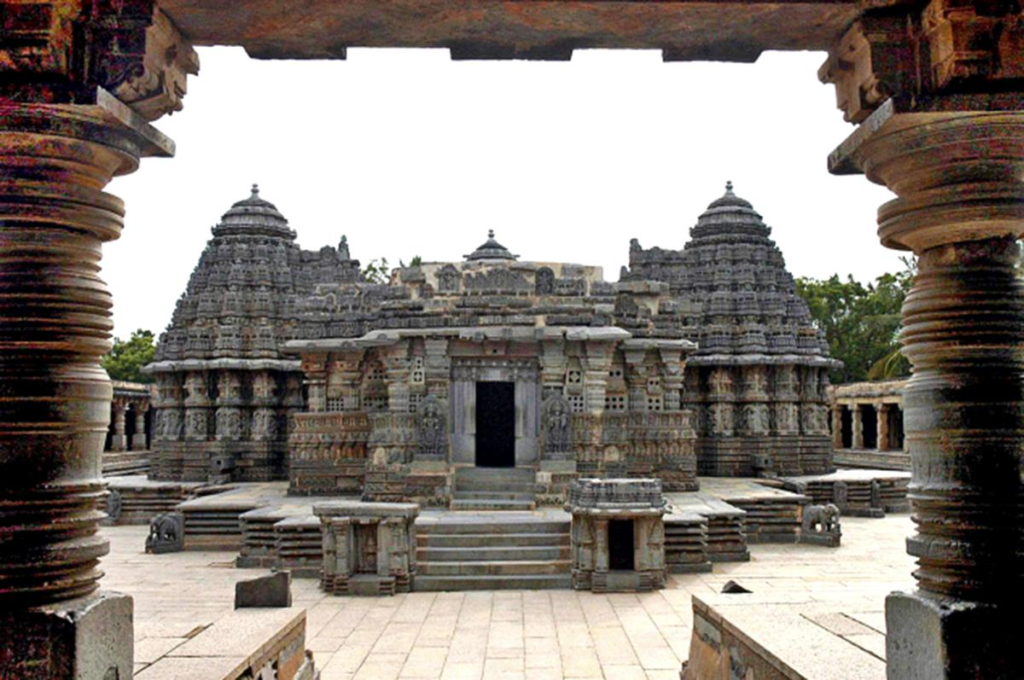
UNESCO World Heritage Sites in India
The Sacred Ensembles of the Hoysalas, inscribed on the UNESCO World Heritage List in 2023, is a remarkable group of three Hoysala-style temples located in the state of Karnataka, India.
These exquisitely crafted temples aren’t just places of worship; they’re living testaments to the artistic mastery and religious devotion of the Hoysala Empire (11th-14th centuries CE).
The Hoysala style is renowned for its intricate carvings, detailed sculptures, and exquisite craftsmanship. These temples, namely the Chennakeshava Temple at Belur, the Hoysaleswara Temple at Halebidu, and the Keshava Temple at Somanathapura, showcase the pinnacle of Hoysala architecture.
Every inch of the outer walls, pillars, and doorways is adorned with intricate carvings depicting deities, mythical creatures, and scenes from Hindu epics like the Ramayana and Mahabharata.
Santiniketan
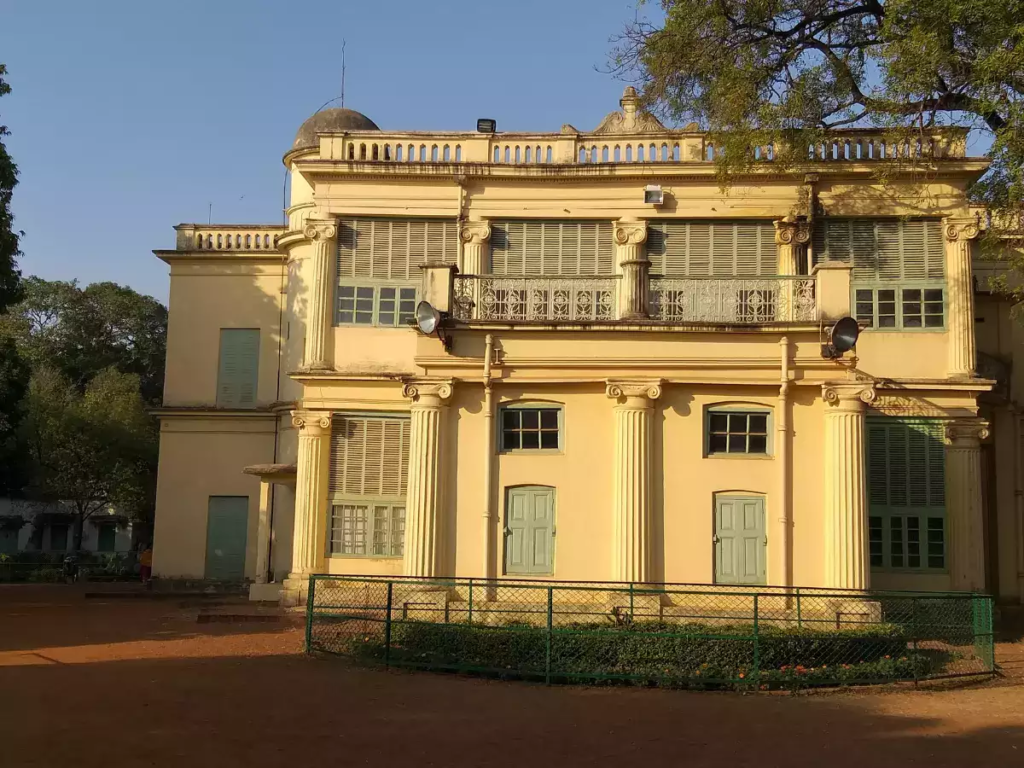
UNESCO World Heritage Sites in India
Santiniketan was indeed inscribed on the UNESCO World Heritage List in 2012. Established in 1901 by the renowned poet and philosopher Rabindranath Tagore, Santiniketan started as a residential school and center for art based on ancient Indian traditions.
Tagore’s vision of promoting harmony between education and nature, and fostering unity across religious and cultural boundaries, is embodied in the very essence of Santiniketan.
You May Also Like->
- Best 17 Places to Visit in Rajasthan

- Best 18 Places to Visit in Agra

- 23 Stunning Places to Visit in Khajuraho

- 22 Top UNESCO World Heritage Sites in India- Part 2

- 21 UNESCO World Heritage Sites in India- Part 1
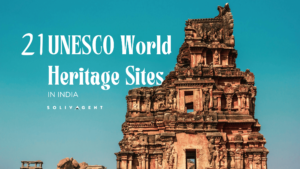
- 15 Best Places to Visit in India in January in 2025

- 9 Best Indian Festivals in 2024- Part 1


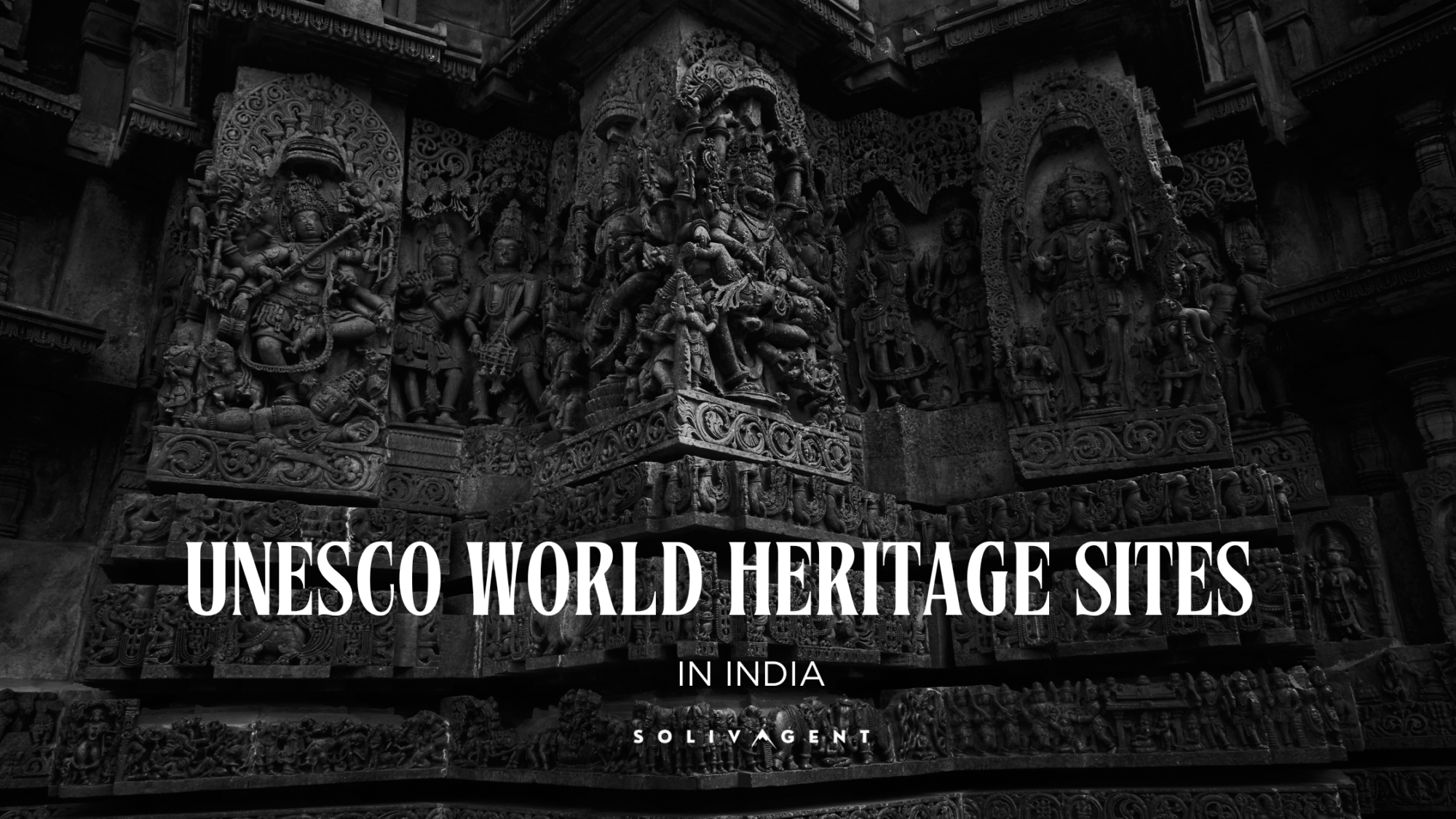
Tech Learner You’re so awesome! I don’t believe I have read a single thing like that before. So great to find someone with some original thoughts on this topic. Really.. thank you for starting this up. This website is something that is needed on the internet, someone with a little originality!
Mountsinai Great information shared.. really enjoyed reading this post thank you author for sharing this post .. appreciated
gab I like the efforts you have put in this, regards for all the great content.